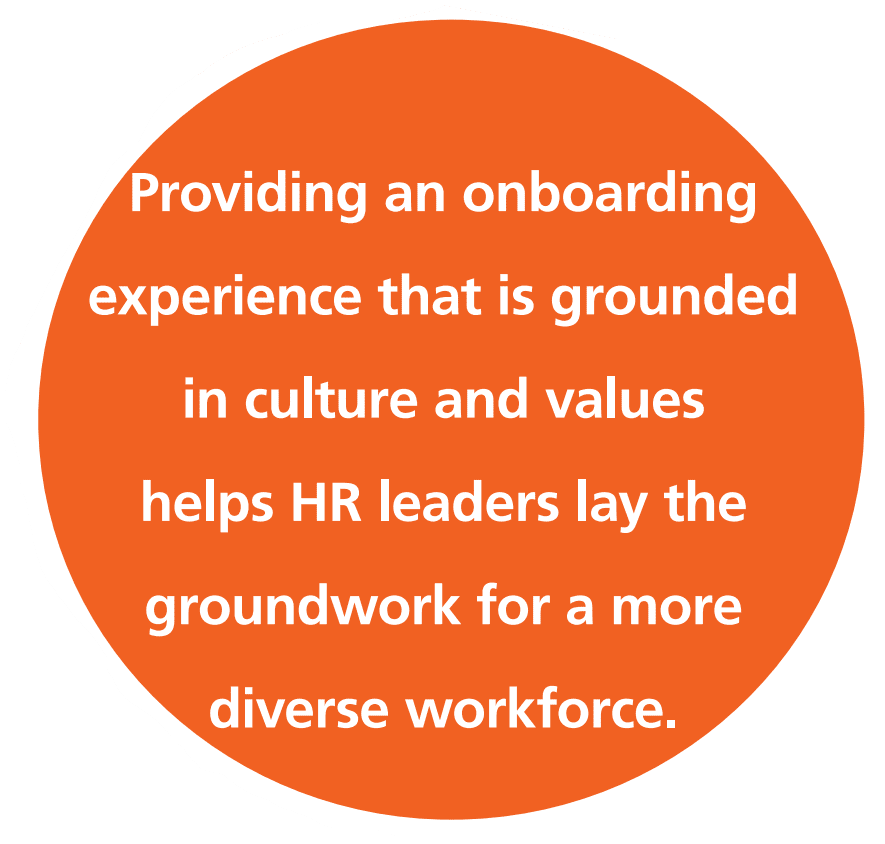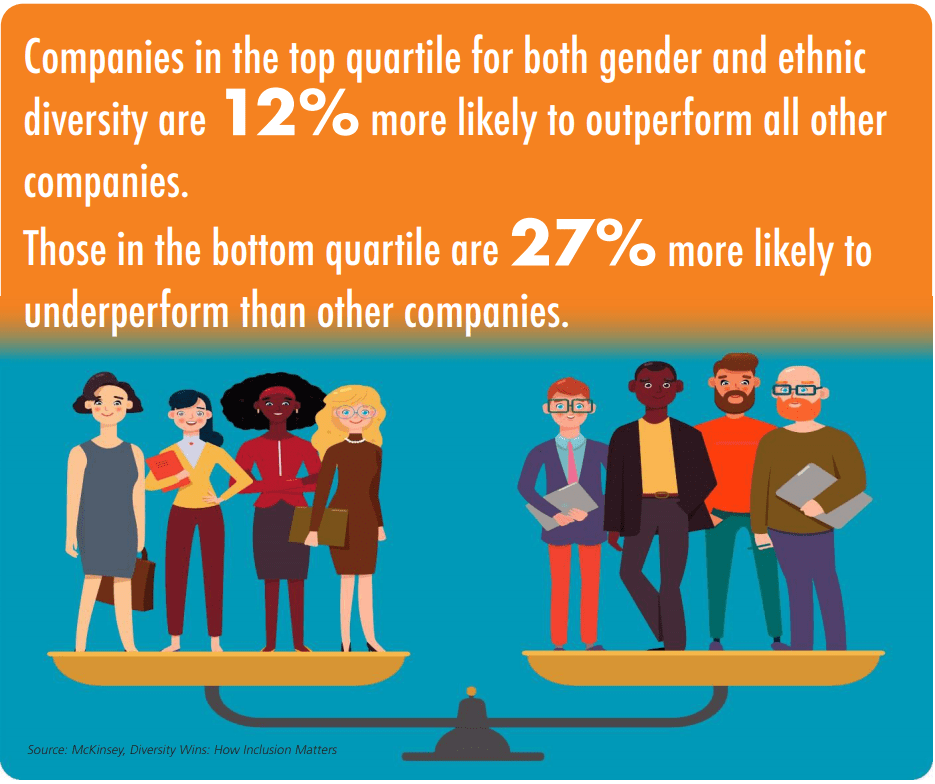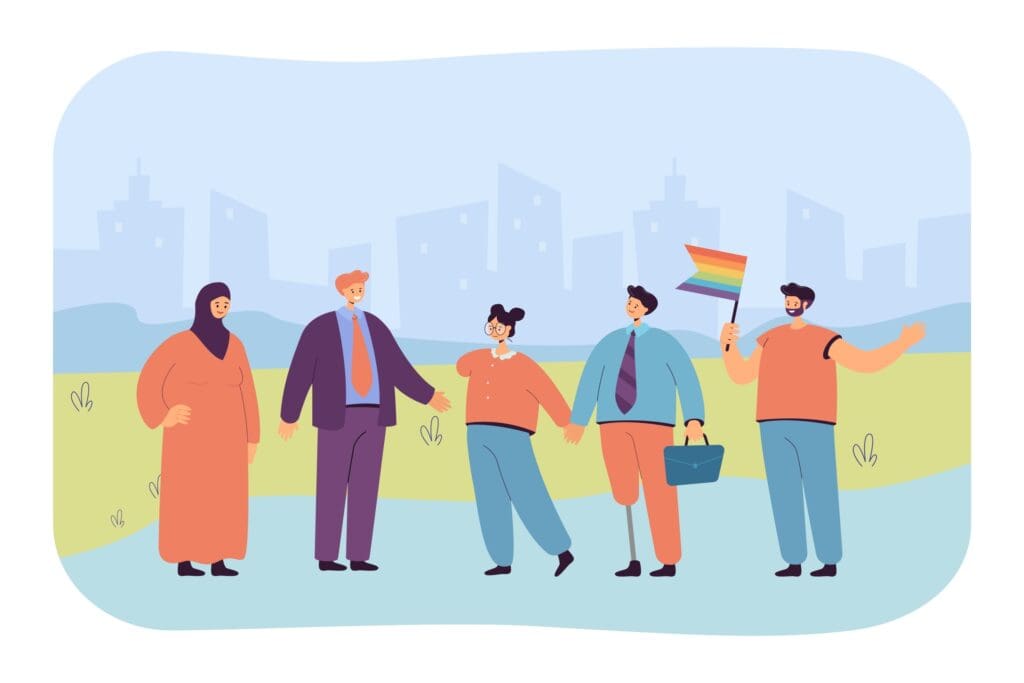Best practices to follow in order to truly adopt an inclusive talent mindset.
By Jackie Dubie
By now, most HR leaders are familiar with the benefits of hiring diverse teams. Organizations that hire employees with different backgrounds, perspectives, and skills not only foster innovation and free thinking – they tend to reach better business outcomes as well.
A recent study by McKinsey, Diversity Wins: How Inclusion Matters, explored the many ways diverse teams outperform more homogeneous ones, lending to an increased sense of community and support, more healthy conflict through trust, and enhanced productivity. In fact, the study found that companies in the top quartile for both gender and ethnic diversity were 12% more likely to outperform all other companies in the data set, while those in the bottom quartile were 27% more likely to underperform.
Most HR professionals understand the need for diversity and many have the skills and know how to hire with inclusion in mind. But without alignment at the top, simply understanding these benefits is not enough. Companies that deprioritize diversity and inclusion – whether by discounting the impact of DEI efforts or not giving HR a seat at the table -will ultimately set their talent up for failure. The next generation of professionals expects an inclusive approach, so ignoring that expectation now means subverting relevance and prosperity later.
Solidifying the Talent Strategy
HR executives can reference all the data they want tying better business outcomes to diversity in hiring. And they’d be right in doing so: It should be considered a priority for any company looking to achieve real equality. But without buy-in at the top, the data won’t move the needle.
To make a real impact, HR needs to have a seat at the decision-making table. Otherwise, talent and business strategies probably won’t be aligned, and any diversity initiatives will take a back seat. Companies that truly adopt an inclusive talent mindset often take the following steps.
• Examine company values. Is inclusion an explicitly stated component of the company mission? Review the language in marketing and hiring materials, and if diversity and inclusion are real priorities, start by saying so.
• Consider new approaches. Commitment from senior leadership doesn’t just relate to hiring. Talent optimization efforts must leverage objective behavioral data and prioritize employee experience over pure profits. Such an approach supports DEI initiatives across the employee lifecycle.
• Support managers through execution. If managers are asked to adjust their approach -say, by using behavioral data to better understand who they are and who they’re working with make sure to articulate the “why.” Without alignment throughout the organization, cohesion and team building efforts will falter.
Hiring for Real Change
When HR executives tackle hiring, their inclusion efforts need to permeate the entire process. Rather than just checking a box for diversity, organizations need to implement changes at a granular level. Start with the very first interaction taken with candidates and work from there.
• Re-evaluate job descriptions. Do they make the talent pool smaller? Are all the skills requirements really necessary? Do they potentially exclude certain groups? Does the company’s branding align with this language?
• Move beyond the resume. Start exploring attributes other than a candidate’s college degree or list of experience. Consider their skills and other data points like behavioral fit and cognitive ability.
• Follow the employee’s journey. To ensure continued success for hires, inclusion needs to apply to onboarding as well. By providing a welcoming onboarding experience that is grounded in a supportive culture, HR leaders can foster long-term professional development and lay the groundwork for a more diverse workforce.
Walking the Walk
There are already plenty of models out there for HR leaders looking to emulate diversity and inclusion.
Companies like Drift and Slack, to name a couple, have helped lead the charge.
The Predictive Index is also working to drive inclusion at work, applying tweaks not only to job descriptions and company collateral, but to product features. Product managers have applied gender neutrality to terms in the software, and day-to-day conversations have been adjusted as well. For example, leaders now make an active effort to avoid addressing a diverse group as “you guys.”
It helps that the company’s staff support its mission. Employees are the drivers of change, and whether the HR team is trying to normalize pronoun expression or overhaul its hiring practices, they can help hold leaders and one another accountable.
For best results, HR leaders should make it clear that people are expected to uphold the organization’s established values. There has to be room for mistakes or else growth can’t happen, but inclusivity efforts won’t be compromised.
Be authentic and make a genuine, consistent effort to normalize these inclusion efforts. After all, companies that instill these principles now will be better situated to attract top talent in the future. The next generation of employees will demand such principles, so ignoring DEI now means jeopardizing the bottom line later.
Jackie Dubie is senior vice president of talent optimization at The Predictive Index.















